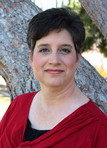Laurisa White Reyes's Blog, page 96
July 29, 2015
BOOKS FROM MY CHILDHOOD

I read a post a couple of years ago on Sarah Negovetich's blog that really resonated with me. She shared a story from her childhood that perfectly captures the intense connection between her as a young girl and books. I felt that connection too, but probably not as young as Sarah did.
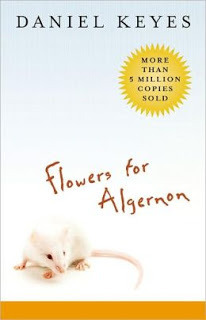 I loved writing at a young age, and wrote poems and plays and stories obsessively from the time I was about seven years old. But my love of books began, I think, when I was about eleven or twelve. I don't recall which book started it all for me. I vaguely recall my mom reading to me from Little House on the Prairie when I was little, and my 2nd grade teacher reading Charlotte's Web to our class. But neither of those books were the spark that lit the fire.
I loved writing at a young age, and wrote poems and plays and stories obsessively from the time I was about seven years old. But my love of books began, I think, when I was about eleven or twelve. I don't recall which book started it all for me. I vaguely recall my mom reading to me from Little House on the Prairie when I was little, and my 2nd grade teacher reading Charlotte's Web to our class. But neither of those books were the spark that lit the fire.I think I was about twelve when I read Steinbeck's Of Mice and Men. I vividly recall feeling like my heart had been ripped out of my chest as I sobbed and sobbed, not for hours, but for days after I finished it. My whole world was a soppy, sorrowful mess. But the depth of despair I felt at Lenny's death was also supremely exquisite.
I liked sad books for a while after that: Les Miserables by Victor Hugo, Flowers for Algernon by Daniel Keys, Gone with the Wind by Margaret Mitchell, Roots by Alex Haley.
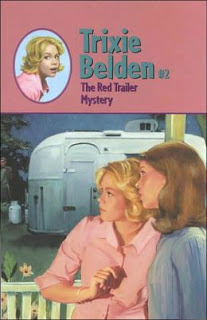 However, I had also discovered something totally different.
The Trixie Belden Mysteries series
by Kathryn Kenny & Julie Campbell drew me into a world of intrigue and suspense I'd never before known. For several years, it's all I read. I got stacks of Trixie Belden books for every holiday and birthday. I read voraciously. I think I read almost every one of the 39 books in the series. I didn't just read them--I wanted to be Trixie Belden! Funny that I never once read a Nancy Drew book. I could care less about Nancy. But Trixie was my hero.
However, I had also discovered something totally different.
The Trixie Belden Mysteries series
by Kathryn Kenny & Julie Campbell drew me into a world of intrigue and suspense I'd never before known. For several years, it's all I read. I got stacks of Trixie Belden books for every holiday and birthday. I read voraciously. I think I read almost every one of the 39 books in the series. I didn't just read them--I wanted to be Trixie Belden! Funny that I never once read a Nancy Drew book. I could care less about Nancy. But Trixie was my hero.I grew out of Trixie about half way through high school, but I saved all my books hoping that one day I'd have a daughter who would love them as much as I did. Well, my oldest daughter didn't care for them, and my next daughter has just reached the age where she might. I will have to go hunt for the box of books in my garage--and you know, whether or not my daughter falls in love with Trixie, I may just crack open a few for old times' sake.
What books did you treasure when you were a kid? Do you still have them?
Published on July 29, 2015 09:00
July 26, 2015
BOOK REVIEW: PROMISE by Judy Young
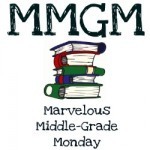
Marvelous Middle Grade Monday is sponsored by Shannon Messenger at Ramblings of a Wannabe Scribe . For a complete list of today's participants, visit HERE .
__________________________________________________
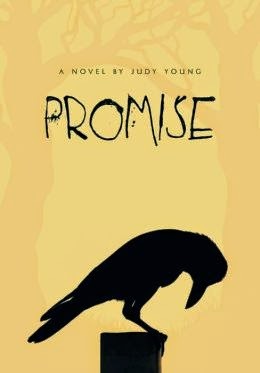 PROMISE
PROMISEJudy Young
Sleeping Bear Press
Ages 8 - 12
Eleven-year-old Kaden has managed to stay under the radar for most of his life. With the exception of Kubla, a pet crow, Kaden doesn't have any friends his own age and he's okay with that. After all, friends can ask inconvenient questions. Questions like Why do you live with your grandmother and where is your father? Questions Kaden doesn't want to answer.
Apart from school and a few trips to town, Kaden and Gram keep to themselves, living a simple life at their cabins outside the small community of Promise. But now Kaden's life is getting a lot more complicated. He's starting middle school, which brings its own set of problems for a boy who doesn't fit in. And then he learns that his father, a man he has never known, is getting out of prison and moving to Promise.
After years of being the outsider at school, Kaden is given a chance to come out of his shell when Yo-Yo, a new boy, moves to the area and offers friendship. But can Kaden trust him? Will Yo-Yo be a real friend after he learns about Kaden's father? The true meaning of friendship, love, responsibility, and loyalty is explored in this novel for middle-grade readers.
MY REVIEW:
I was given PROMISE by the publisher in exchange for an honest review, and I honestly have to say I thoroughly enjoyed every page of PROMISE.
From the opening pages, I hoped Kaden would have a happy ending, but I discovered that not all stories do have happy endings. Sometimes things don't turn out the way we want them to, but despite disappointments, there is always hope for something better.
Judy Young does a fantastic job with Kaden and all the friends and family in his life. I kept turning pages because I was so curious to find out what would happen next. If you want a heartwarming read that will stay with you long after you've read the last page, PROMISE is the book for you.





CONTENT RATING:
Profanity: None
Sexuality: None
Violence: Mild
Published on July 26, 2015 16:00
July 22, 2015
WHAT KIND OF BOOKS DO YOU READ?
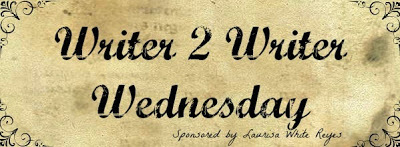
Have you ever had someone ask you "What kind of books do you read?" I've been guilty of asking that question myself. It seems to be a good conversation-starter, finding out if someone likes the same genre of books you do.
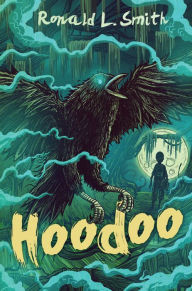 But how many of us, really, read only one or two types of books? We might have a favorite genre or author, but I think it's a pretty safe bet to say most of us read a variety of books.
But how many of us, really, read only one or two types of books? We might have a favorite genre or author, but I think it's a pretty safe bet to say most of us read a variety of books.For my job, I read a lot of middle grade books--all genres. I receive on average about 30 books a month in the mail. I can't read all of them, so I send several to my reviewers and pick out one or two titles for myself. My time is valuable to me, so I'm pretty picky about which books end up on my immediate TBR list. And if I start reading a book and discover it doesn't tickle my fancy, I have no qualms about setting it aside for something else.
I also love young adult books. But I am also a sucker for a really good adult historical novel--or sci/fi--or horror! Okay--I pretty much read everything.
So the real question ought to be "What about a particular book makes you pick it up and read it? And what makes you KEEP reading?"
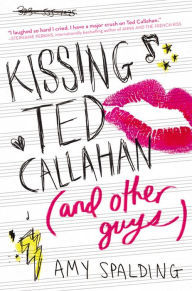
Right now, I'm reading a middle grade novel called HOODOO by debut author Ronald L. Smith. Several things hooked me about HOODOO:
* THE COVER -- With hundreds, thousands of books being published every year, covers start to run together. A cover that is distinctive will immediately pull away from the pack. I like images that spark the imagination and give you a teaser into the story. I also love unique fonts.
* THE PREMISE -- Hoodoo is a black boy growing up in a 1930s southern town steeped in folk magic. Just the concept alone is different, and I love books with diverse characters and settings.
* THE WRITING -- HOODOO is really well-written. The voice of Hoodoo is clear, and I was hooked
from the first chapter.
Another book I'm reading right now is KISSING TED CALLAHAN by Amy Spalding. I bought the book because I know Amy. But I'm reading because it is so doggone funny! Her cover is like peeling back the skull of a teenage girl and observing the strange workings within. The characters are a hoot!
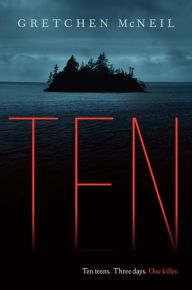 I recently read TEN by Gretchen McNeil. The cover--deliciously creepy. The story--scary as hell! I loved it!
I recently read TEN by Gretchen McNeil. The cover--deliciously creepy. The story--scary as hell! I loved it! Maybe the bottom like is that I like books that are GOOD! Books that are different than anything else out there!
So...what kind of books do you like to read? Or, um, I mean--the book you're reading now, or just finished reading, tell us WHY you love it!
Published on July 22, 2015 05:00
July 17, 2015
COVER REVEAL: THE DIAMOND LOOKING GLASS
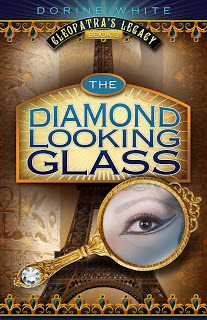
THE DIAMOND LOOKING GLASS Cleopatra's Legacy, Book III Dorine WhiteSkyrocket PressAges 8 - 12
Coming in October 2015!!!
Beauty and the Beast.
The world knows it as a cartoon with dancing teacups and broomsticks. To twelve year old Claire La Fleur, it is family history, and the power behind Belle’s mirror is real. Every ten years her family gathers to see if the mirror will awaken, and for the last two hundred years it has slept.
This time, Claire’s touch awakens the magic within the diamond looking glass, a direct portal to the past and a way to communicate with Cleopatra, the last pharaoh of Egypt. The lure of power brings with it many perils, and a betrayal close to home thrusts Claire into a treacherous underworld. To protect the mirror, she travels into the Louvre museum in the dark of night, searches abandoned subway tunnels, and walks the catacombs of the dead.
Welcome to Paris, France- where danger follows in every step.
Published on July 17, 2015 00:00
July 15, 2015
PANTSING VS. PLOTTING: THE RESULTS ARE IN
 I wrote a guest blog a few years back about the benefits of using a system I call Road Mapping to write a novel. Road Mapping is creating a detailed outline of a novel prior to writing it. This is how I've always written my books. I am a planner. I love to make lists. I love to know exactly where I'm going before I begin my journey.
I wrote a guest blog a few years back about the benefits of using a system I call Road Mapping to write a novel. Road Mapping is creating a detailed outline of a novel prior to writing it. This is how I've always written my books. I am a planner. I love to make lists. I love to know exactly where I'm going before I begin my journey. Some people did not agree with my point of view on this. Writers tend to fall into one of two categories: Planners and Pantsers. Pantsers are writers who just start writing and see where the story leads them. Of course, they may have some good ideas to get them started, but they don't follow an outline. They follow their hearts. Feelings run strong in both camps, sometimes too strong.
Some people did not agree with my point of view on this. Writers tend to fall into one of two categories: Planners and Pantsers. Pantsers are writers who just start writing and see where the story leads them. Of course, they may have some good ideas to get them started, but they don't follow an outline. They follow their hearts. Feelings run strong in both camps, sometimes too strong.After reading a couple of comments about my post defending the Pantser way of doing things, I decided that to be fair, I really needed to try writing a novel without a safety net -- just once. So I did. That summer I set a goal. I would write every day for 90 days. All I knew ahead of time was the book's basic premise (I had no idea what the plot would be) and that the finished product would be a 50,000 word young adult paranormal novel.
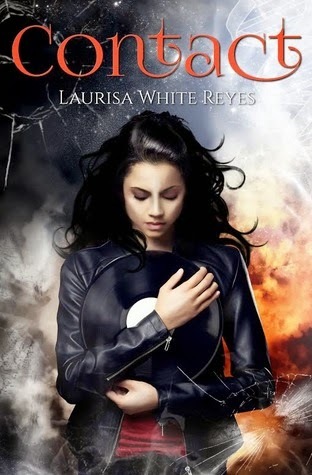 So I set off without a map, without an outline, without any idea where this would end up. I wrote every day for about an hour, and by September I had a finished manuscript. That manuscript was
CONTACT
, which was published in 2014 with Hallowed Ink Press.So, I can honestly say that I've written novels using both the Pantsing and the Planning methods. Here were my thoughts on them both.
So I set off without a map, without an outline, without any idea where this would end up. I wrote every day for about an hour, and by September I had a finished manuscript. That manuscript was
CONTACT
, which was published in 2014 with Hallowed Ink Press.So, I can honestly say that I've written novels using both the Pantsing and the Planning methods. Here were my thoughts on them both.TIME
Pantsing gave me results faster than Planning has. My other novels all took around a year to write, including the planning stages. My pantsed novel took three months. The amount of time I'm spending in revision is about the same. This is not what I expected, because I thought my pantsed novel would be full of holes and need to have significant patch ups. It hasn't needed any more repair work than my planned novels.
PLOT DEVELOPMENT
I found that while my planned novels were easier to actually sit down an write because I knew exactly what I wanted to write by the time I turned on my computer, the actual process of figuring out the plot was the same. I still mulled it over in my brain, still dreamed about it, still got excited when I figured things out. The only difference was that in one case I jotted down my thoughts first, and in the other I went straight to writing the text.
QUALITY
Well, of my plotted novels, one is being published in May. Another won 1st place in a contest and has garnered some great attention in another. My pantsed novel has already drawn attention from both a publisher and an agent. So, I have to say pantsing did not diminish the quality of the finished product.
IN CONCLUSION
I am left on the fence on this one. I can no longer say one method is better than the other. I've done them both and had success with both. I think in the future I may not rely so heavily on outlining as I once did. But I do like to know where I'm going in a story, even it's just in my head. But I may very well try my hand at winging it again one of these days, just for the fun of it.
Published on July 15, 2015 09:00
July 8, 2015
HOW TO WRITE A REAL PAGE-TURNER (Part 5)
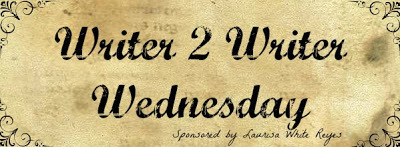
Today is our fifth and final post in my HOW TO WRITE A REAL PAGE-TURNER series. In week #1 I defined what a page-turner is and why authors should write them. Week #2 I shared five Sure Fire Fun-Suckers, what to avoid that are sure to put your readers to sleep. Week #3 I discussed the first of three Page-Turner techniques, Shorter Chapters. Week #4 was the second technique, Multiple Points of View. Today let's tackle the third technique:
#3: CLIFFHANGER CHAPTER ENDINGS
Now, the three techniques I presented are by no means exhaustive. There are many other techniques writers use to create page-turners, such as varied pacing, action, and so forth. But the three I discuss here can be applied not only to new writing projects, but also to manuscripts in need of a little umpf. They don't require entire rewrites, just a little tweaking here and there.
So what is a cliffhanger chapter ending? Simply it is the sort of chapter ending that leaves a nagging question in your reader's mind, a question they feel compelled to answer by turning the page to find out what happens next.
There are four types of chapter endings that can get the job done:
1. FORESHADOWING
Foreshadowing is a hint or suggestion that something important, scary, shocking or life-altering is about to happen. Take a look at this chapter ending from Devil in the White City by Erik Larson:
“Even Depew, however, did not foresee the true magnitude of the Forces that were converging on Burnham and Root. At this moment he and they saw the challenge in its two most fundamental dimensions, time and money, and these were stark enough. Only Poe could have dreamed the rest.”
The question readers are left asking is - Dreamed the rest? What rest? And if only Poe, the master of horror and suspense, could have dreamed, it must be something truly, and deliciously, awful!
Turn the page.
2. UNANSWERED QUESTIONS
While all cliffhanger endings create a question in your reader's mind, some create a partial image or expectation that can only be fully realized by reading on. The following example is from Wonder by R.J. Palacio:
“My name is August, by the way. I won’t describe what I look like. Whatever you’re thinking, it’s probably worse.”
The author here gives us just the briefest suggestion that something is wrong with this kid's face, but what?
Turn the page.
3. HEIGHTEN SUSPENSE
Chapter endings can also be used to increase anticipation for the reader. You've built up his expectation of something truly traumatic or climatic, and just as that expectation is about to pay off you draw it out just a little bit longer. Take a look at how Dan Brown achieves this in The Da Vinci Code:
“Langdon could hear the tape rewinding now. Finally, it stopped, and the machine engaged. Langdon listened as the message began to play. Again, the voice on the line was Sophie’s.
‘Mr. Langdon,’ the message began in a fearful whisper. ‘Do not react to this message. Just listen calmly. You are in danger right now. Follow my directions very closely.’”
That's the end of the chapter! And of course we have to know what those directions are and what danger he is in!
Turn the page.
4. DROP THE BOMB
Finally, chapter endings can be used to provide a sudden and startling revelation that will make your reader gasp. Here is a biggie from The Hunger Games by Suzanne Collins.
“The crowd draws in a collective breath and then you can hear a pin drop and I’m feeling nauseous and so desperately hoping that it’s not me, that it’s not me, that it’s not me.
Effie Trinket crosses back to the podium, smoothes the slip of paper, and read out the name in a clear voice. And it’s not me.
It’s Primrose Everdeen.”
Gasp!
Turn the page.
TRY IT OUT:
Now, take some time and read through your current work in progress. Search for that AH-HA moment in each chapter, where something remarkable or shocking happens or is revealed. End your chapter there, either right before or after that climactic moment. That's right. Just cut it.
Begin your next chapter either where you left off, or if you're writing in multiple points of view, switch to somewhere/someone entirely different. Then come back to that AH-HA moment later on.
Not every chapter has to be a cliffhanger chapter ending, and not every ending has to illicit a gasp from your readers, but there should be plenty of motivation for your readers to turn those pages late into the night.
If you're not confident about pulling this off, I highly recommend you pick up a book or two that you consider page-turners and study--not just read, but study--that author's techniques and then apply them to your own writing.
Published on July 08, 2015 09:00
July 1, 2015
HOW TO WRITE A REAL PAGE-TURNER (Part 4)

Last week I introduced the first of three techniques writers use to make their books page-turners. Today let's look at a second technique:
#2: MULTIPLE POINTS OF VIEW
When I first started writing for children about seven years ago I was told by a certain literary agent that books for middle grade readers must be written in a single point of view (POV). The agent explained that trying to keep track of more than one voice in a story was beyond the ability of most kids, that it would be too confusing.
This didn't make sense to me. I'm a mother of five children, and I had seen for myself how they followed movies and video games with multiple story lines with ease. I decided the agent's advice wasn't given contemporary kids who are multi-tasking masters enough credit.
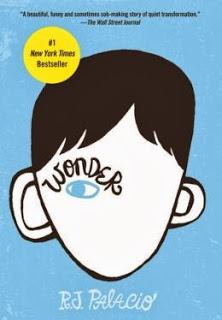 At the same time, I happened to be reading
The Da Vinci Code
by Dan Brown. Brown is the king of page-turners. I read that book in two nights because I literally could not stop reading it. And I asked myself why? So I read it again and studied his techniques. One thing I discovered is that he switches between three points of view, weaving together three story lines which all converge at the climax. Dan Brown writes for adults, but I wondered why couldn't this same technique be applied to a children's novel?
At the same time, I happened to be reading
The Da Vinci Code
by Dan Brown. Brown is the king of page-turners. I read that book in two nights because I literally could not stop reading it. And I asked myself why? So I read it again and studied his techniques. One thing I discovered is that he switches between three points of view, weaving together three story lines which all converge at the climax. Dan Brown writes for adults, but I wondered why couldn't this same technique be applied to a children's novel?So I wrote my novel, The Rock of Ivanore , with several points of view just to prove it could be done. And guess what? Kids love it.
Today writing from multiple points of view has become more acceptable in the world of children's books. Most recently, Wonder by R.J. Palacio has taken the country by storm. This story about a boy with a disfigured face has six distinct voices. Above World and Mirage by Jenn Reese each have two POVs, as does Rick Riordan's The Red Pyramid . The Candymakers by Wendy Mass has four.
TRY IT OUT:
Write a brief scene (a paragraph to one page) from one of the perspective of one of the characters below. Use the following to get you started. The re-write the exact same scene from a different character's POV.
Prompt: Two characters argue over an object, each one claiming it belongs to him/her.
Characters: •12-year-old boy in a wheelchair • 18-year-old girl with spiky blue hair • middle-aged African American woman from the south • 80-year-old homeless man • school librarian • famous action movie star • twin siblings • a scientist • a young mother with three small children
* Be sure to stop by next week for Part V of How To Write A Real Page-Turner, and discover the third and final page-turner technique!
Published on July 01, 2015 09:00
June 26, 2015
BOOK REVIEW: TEN by Gretchen McNeil
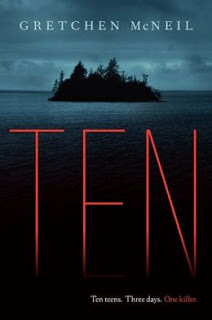 TEN
TENGretchen McNeil
Baltzer+Bray
Ages 14 & up
It was supposed to be the weekend of their lives—an exclusive house party on Henry Island. Best friends Meg and Minnie are looking forward to two days of boys, booze, and fun-filled luxury. But what starts out as fun turns twisted after the discovery of a DVD with a sinister message: Vengeance is mine. And things only get worse from there.
With a storm raging outside, the teens are cut off from the outside world . . . so when a mysterious killer begins picking them off one by one, there’s no escape. As the deaths become more violent and the teens turn on one another, can Meg find the killer before more people die? Or is the killer closer to her than she could ever imagine?
MY REVIEW:
I love Gretchen McNeil. I don't mean as a writer, though she is incredible in that realm. I mean I love her as a human being. I've been fortunate to know her, and I can honestly say she is one of the most enthusiastic, gracious, and generous people I know. So why did it take me so d**n long to read TEN? I thoroughly enjoyed her book POSSESS, by the way.
Well, my only excuse is that I started grad school around the time TEN came out. I've had a personalized copy on my shelf ever since, and it has also been at the top of my TBR list ever since. Now that I'm graduated and I actually have time to read for pleasure (not just in the bathroom or in my car while my kids are in music lessons), I finally pulled it off the shelf.
I knew I'd enjoy it. No doubt about that. I just didn't think I'd enjoy it as much as I did. I started reading Sunday morning and finished it Monday night. I NEVER read books that fast. My average reading time is a month at least. But TEN got its hooks in deep and I could not stop reading!!! I got 3/4 through it by midnight on Sunday and only stopped because I make it a point not to stay up late, and midnight was really pushing it for me. And when I went to bed, I literally had to go through the house and close all the windows and lock them and check the locks on the doors. And I actually slept with my lamp on. I really did.
TEN is so deliciously creepy, so suspensefully thrilling, it has got to rank up there with the best of them. Inspired by Agatha Christie's AND THEN THERE WERE NONE, McNeil totally channels Christie and King and Harris...wrapping all things terrifying into a yarn aimed at the YA crowd (but equally pleasing to us grown-ups, too!)
If you like things to go bump in the night, then TEN had better be at the top of your TBR list.





CONTENT RATING:
Profanity: HighViolence: HighSexuality: Moderate
Published on June 26, 2015 13:19
June 24, 2015
HOW TO WRITE A REAL PAGE-TURNER (Part 3)

In Part One, I defined what being a Page-Turner is and why writers should seriously consider writing one. In Part Two I shared 5 Sure Fire Fun-Suckers, things that make books boring. Today I will discus the first of three Page-Turner Techniques that are sure to make your work in progress a "can't-put-it-down" book.
#1. SHORTER CHAPTERS
Seems obvious, doesn't it? But the truth is that you will simply lose many readers after just a few pages. How many times have you opened a book and counted the pages in a particular chapter to see if you really felt like committing yourself to it? Chances are if the chapter was too long, you put the book down and reached for something else.
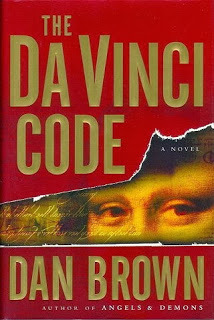
Pick up a few books you consider "page-turners." Chances are most of them have pretty short chapters. For example, Dan Brown's The DaVinci Code has chapters as short as a single page. The overall length of two books may be exactly the same, but the fact remains that short chapters achieve two very important things for your reader:
Creates the illusion of a "fast read."
Increases the likelihood that the reader
will read multiple chapters in a single sitting.
When asked about whether or not the act of reading books is in danger of giving way to electronic media, Author Hernan Casciari said the following:
“What’s important right now is our lack of concentration, our inability to be able to read, listen or write for more than 20 minutes."
Actually, Casciari hit the nail on the head, and here's why.
In 2012, the Associated Press published research revealing that the attention span of the average person (adult or child) is a mere 8 second. 8 seconds!!! That's how long you have to capture your readers' attention--and KEEP IT!
To give you an idea of what we're up against, in the year 2000 the average attention span was 12 seconds, and the attention span of a goldfish is 9 seconds.
Now, we can bemoan the damage to our brains caused by video games and TV shows all we want, but as writers we need to look at this information through different lenses. Our readers' attention spans are shrinking. So the question is not how do we stop this, but how can best reach our readers on their level?
Try It Out!
If you are working on a manuscript right now, try these tweaks to help make your story more "bite-sized."
1. Write chapters that are between 3 - 5 pages.
2. Divide longer chapters into two or more shorter chapters.
3. Utilize Framing Devices to separate scenes within a longer chapter.
-White Space (add an extra blank line between scenes)
-Varied Font (use italics to identify quotes, different forms of text such as journal entries or letters, or for dreams, flash backs, etc.)
-Asterisks (can be used within white space to separate scenes)
Published on June 24, 2015 09:00
June 19, 2015
WHAT ARE YOU READING THIS SUMMER?
Last summer I read a lot of zombie books (The Girl with All the Gifts, Zom-B, Forest of Hands and Teeth) and a smattering of other suspense, apocalypse, monster stories. This summer I've put together kind of a mish mash of books I've been wanting to read for a while but haven't had the time along with a few newer titles. My list, of course, may change at any moment for any reason.
What I'm reading right now:
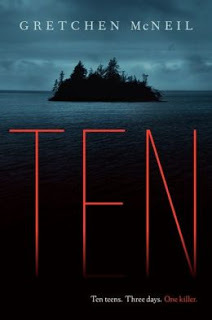
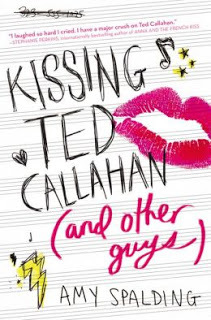
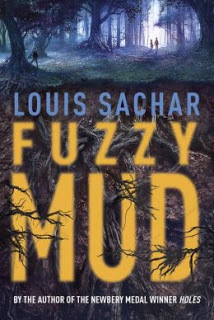
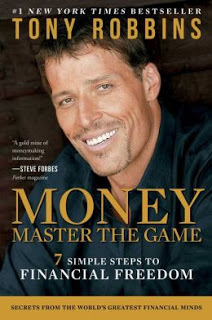
What I plan to read in July and August:
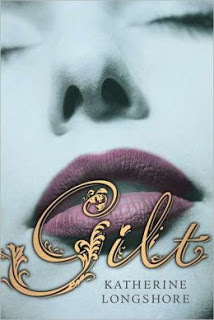
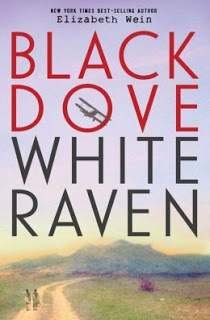
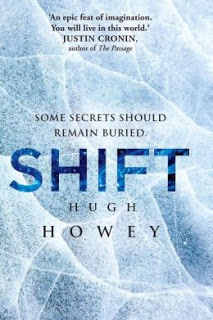
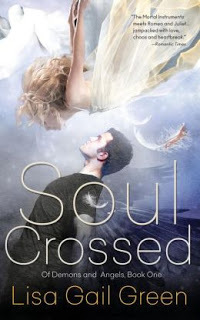
And if I have a little extra time to kill...
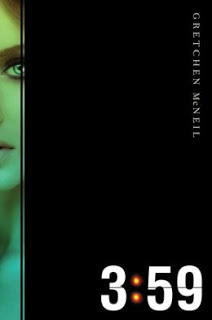
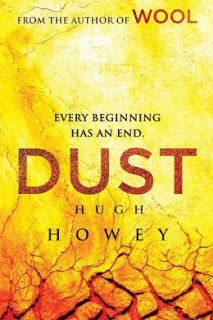
So, what's at the top of your TBR list?
What I'm reading right now:




What I plan to read in July and August:




And if I have a little extra time to kill...


So, what's at the top of your TBR list?
Published on June 19, 2015 07:00

